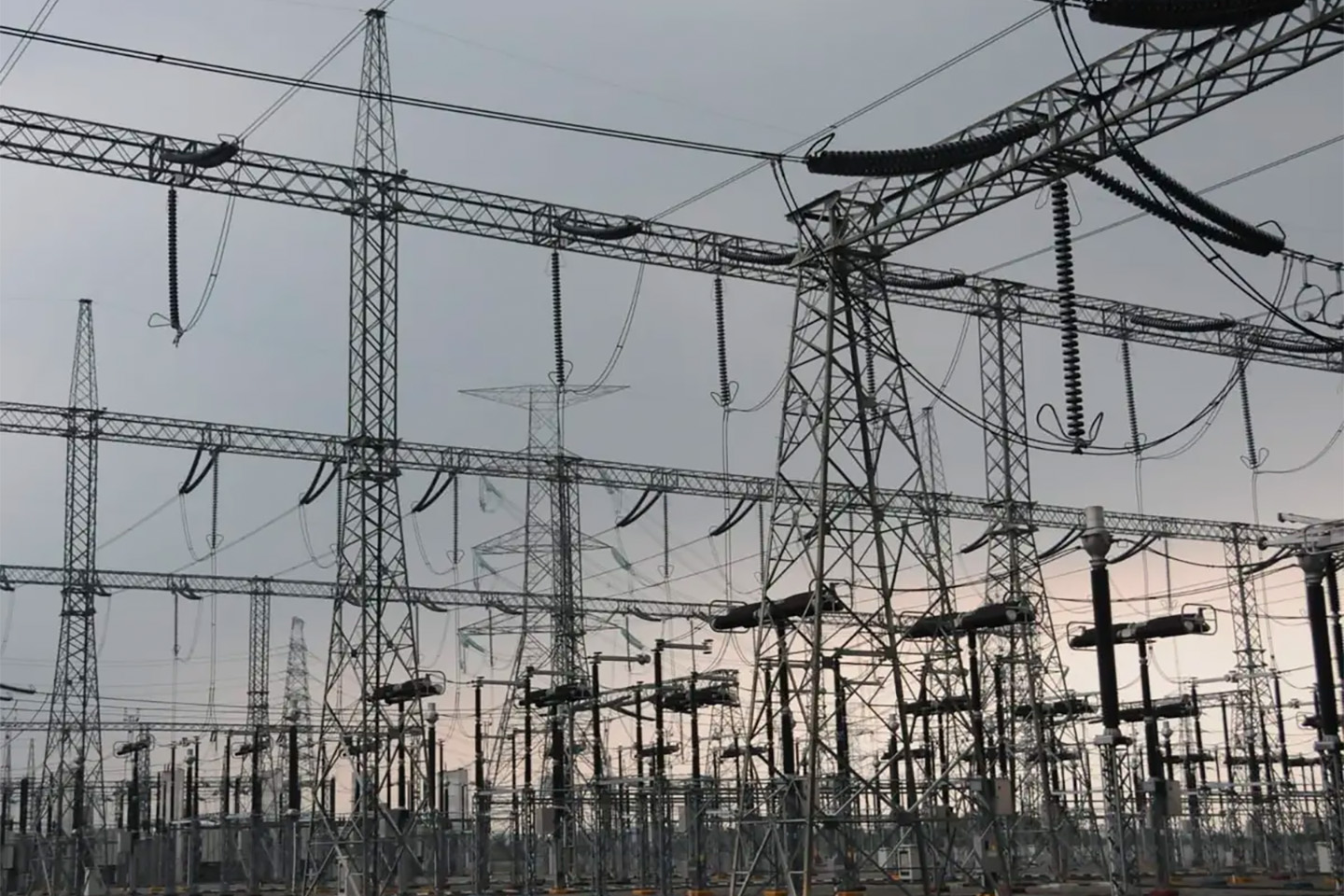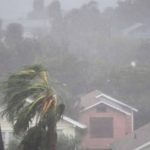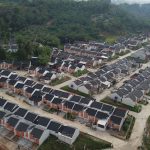Liga Asuransi – Dear Risk Takes, how are you? I hope your business is doing well.
As a senior insurance broker, this time I want to discuss the risk and insurance for High Voltage Tower Construction. If you are interested in this article, please share it with your friends so they can understand as much as you do.
Indonesia, like many nations, faces surging power demand due to industrialization and urbanization. To address this, the country focuses on expanding its power generation, combining conventional and renewable sources. Notably, Indonesia is increasingly keen on harnessing renewables like geothermal, solar, and hydropower. High-voltage transmission lines are vital for efficiently transmitting electricity from these sources to demand centers.
Establishing a robust, interconnected grid is crucial for widespread electricity distribution across the archipelago. High-voltage transmission lines interconnect regional power systems, fostering resource sharing and enhancing overall grid stability. Given Indonesia’s susceptibility to natural disasters, resilient power infrastructure is imperative. High-voltage transmission towers contribute by providing redundancy and alternative routes for power transmission.
This expansion aligns closely with economic development goals, supporting industries, attracting investments, and ensuring electrification for urban and rural areas. Government initiatives and regulations significantly influence the development of Indonesia’s energy sector, including transmission infrastructure.
Infrastructure investment, both domestically and internationally, is pivotal for constructing and maintaining high-voltage transmission lines. The archipelagic nature poses geographical challenges, necessitating efficient transmission over diverse terrains. Indonesia’s abundant renewable energy potential, coupled with efforts in grid modernization, integrates clean sources into the national grid. Yet, balancing energy needs with environmental considerations remains crucial, requiring thoughtful design to minimize impact and address community concerns.
THE RISKS OF HIGH VOLTAGE TRANSMISSION LINE TOWER CONSTRUCTION
The construction of high-voltage transmission line towers involves various risks that can impact the safety of workers, the successful completion of the project, and the long-term functionality of the transmission infrastructure. Here are some key risks associated with the construction of high-voltage transmission line towers:
Safety Hazards:
- Electrical Hazards: Workers are exposed to the risk of electrical shocks or burns during construction activities involving high-voltage components.
- Falls: Construction at elevated heights poses a risk of falls for workers involved in tower assembly and installation.
Environmental and Geographical Risks:
- Weather Conditions: Adverse weather conditions, such as storms or high winds, can pose risks during construction, affecting worker safety and construction timelines.
- Geographical Challenges: Construction in diverse terrains, especially in regions with challenging landscapes, can lead to difficulties in tower placement and foundation work.
Logistical Challenges:
- Transportation Issues: Transporting heavy materials and equipment to remote or challenging locations can lead to logistical challenges and delays.
- Supply Chain Disruptions: Interruptions in the supply chain for construction materials may impact project timelines and costs.
Construction Delays:
- Permitting and Regulatory Compliance: Delays in obtaining necessary permits and meeting regulatory requirements can extend project timelines.
- Unforeseen Issues: Unexpected challenges, such as unforeseen ground conditions or construction complications, can lead to delays.
Equipment Failure:
Mechanical Failures: Equipment used in tower construction, such as cranes or specialized machinery, may experience mechanical failures, leading to safety hazards and project delays.
Contractual and Legal Risks:
- Contract Disputes: Disputes with contractors or subcontractors over project specifications, timelines, or payments can lead to project interruptions.
- Legal Compliance: Failure to comply with legal and regulatory requirements can result in fines and legal complications.
Technological and Design Challenges:
Design Flaws: Inadequate design or engineering flaws can lead to structural issues with the towers, compromising their long-term stability.
Technology Integration: Challenges in integrating new technologies, such as smart grid components, may impact the efficiency of the transmission infrastructure.
Man-Made Risks:
- Vandalism: Deliberate acts of vandalism, including graffiti, cutting of cables, or physical damage to tower components, can disrupt power transmission and compromise the structural integrity of towers. Security measures such as fencing, surveillance cameras, and lighting can deter vandals. Regular patrols and prompt repairs in response to vandalism incidents are crucial.
- Accidents: Vehicle collisions, construction-related accidents, or excavation activities near transmission towers can lead to structural damage, equipment failures, and service disruptions.
Mitigating these risks involves thorough planning, adherence to safety protocols, effective project management, and proactive communication with stakeholders. Regular risk assessments and contingency planning are crucial to anticipate and address potential challenges during the construction of high-voltage transmission line towers.
TYPES OF INSURANCE COVERAGE
Insurance coverage for high-voltage transmission towers involves a combination of policies designed to address various risks associated with the operation, maintenance, and potential disruptions to these critical components of the energy infrastructure. Here are the key types of insurance coverage relevant to high-voltage transmission towers:
Construction Erection All Risks (CAR) Insurance:
- Coverage: Protects against physical damage to transmission towers, materials, and equipment during the construction or erection phase. This includes coverage for risks such as accidents, fire, theft, natural disasters, and third-party liability.
- Considerations: Essential during the construction, installation, or upgrade of transmission infrastructure to safeguard against potential losses or damages that may occur during the project. CAR insurance provides coverage from the initial stages of construction until the project is completed.
By incorporating Construction Erection All Risks insurance into the coverage portfolio, organizations can address the specific risks associated with the construction phase of high-voltage transmission towers. This coverage ensures financial protection for the project and helps mitigate potential disruptions that may occur during the construction process.
Property Insurance:
- Coverage: Protects against physical damage to transmission towers and associated equipment caused by covered perils, including natural disasters (e.g., storms, earthquakes), accidents, vandalism, or other unforeseen events.
- Considerations: Coverage may extend to the towers themselves, as well as substation equipment, control systems, and other properties essential for the functioning of the transmission infrastructure.
Liability Insurance:
- Coverage: Protects against third-party claims for bodily injury or property damage resulting from incidents related to transmission towers. This includes coverage for legal defense costs.
- Considerations: Liability coverage is crucial for mitigating the financial impact of legal claims arising from accidents, environmental incidents, or other liability exposures.
Environmental Liability Insurance:
- Coverage: Addresses liabilities arising from pollution incidents or environmental damage associated with the transmission infrastructure. This can include coverage for cleanup costs, legal expenses, and third-party claims.
- Considerations: Given the potential environmental impact of transmission tower incidents, environmental liability insurance is essential for managing associated risks.
Equipment Breakdown Insurance:
- Coverage: Protects against the financial consequences of equipment failures, including damage to transmission tower components, transformers, and other critical equipment.
- Considerations: Essential for minimizing downtime and repair costs associated with unexpected equipment failures.
Workers’ Compensation Insurance:
- Coverage: Provides coverage for medical expenses and lost wages for employees who are injured or become ill while performing their job duties.
- Considerations: Ensures compliance with workers’ compensation regulations and supports the well-being of employees involved in the maintenance and operation of transmission towers.
REAL-LIFE CASE OF AN INSURANCE CLAIM
In 2020, during a high-voltage transmission line construction project linking Central Java and East Java provinces, a significant setback occurred when a fire engulfed and damaged the entire stock of project materials at a storage station. The financial toll amounted to approximately Rp. 20 billion, posing a considerable challenge to the project’s continuity.
Upon filing a claim with the insurers, the initial response was a rejection, citing that the location of the loss fell outside the specified project sites outlined in the policy. Compounding the issue, the insured had opted not to utilize the services of an insurance broker, relying instead on an agent. This decision, coupled with suboptimal insurance coverage, further complicated the situation.
Undeterred, the insured took the matter to dispute resolution, enlisting the support of a legal team from a reputable law firm. A meticulous review of the insurance policy yielded a robust argument in favor of the insured. The policy schedule explicitly defined the project site as encompassing the entire project area, from inception to completion. Therefore, it was contended that the location of the fire incident fell squarely within the bounds of the project area as stipulated in the policy.
Armed with this compelling argument, the legal team successfully navigated the dispute resolution process, ultimately securing a 100% settlement for the claim.
This real-life saga underscores the critical role of comprehensive insurance coverage, the importance of leveraging the expertise of insurance brokers, and the necessity of legal support when disputes arise. In the end, the resolution not only alleviated the financial burden on the project but also emphasized the value of meticulous policy interpretation in the realm of complex construction projects.
WHY DO YOU NEED AN INSURANCE BROKER?
Engaging the services of an insurance broker is particularly beneficial for securing insurance coverage for high-voltage transmission line towers due to several complex factors associated with these critical infrastructure components. Here are key reasons why the expertise of an insurance broker is essential in this context:
Specialized Knowledge:
Complex Risks: High-voltage transmission line towers involve complex risks, including natural disasters, technological failures, and regulatory compliance. An insurance broker with specialized knowledge in the energy and utility sector can navigate these intricacies effectively.
Tailored Coverage:
Customized Solutions: An insurance broker works to understand the specific needs and risks of the client, facilitating the design of customized insurance solutions. This ensures that the coverage is precisely tailored to the unique challenges associated with high-voltage transmission infrastructure.
Risk Assessment and Mitigation:
Thorough Analysis: Insurance brokers conduct in-depth risk assessments to identify potential vulnerabilities and exposures. They leverage their expertise to recommend risk mitigation strategies and appropriate insurance coverage to address the identified risks.
Industry Connections:
Access to Markets: Insurance brokers have established relationships with various insurance carriers and underwriters. This network allows them to access a broad spectrum of insurance markets, ensuring clients have access to competitive coverage options that suit their specific needs.
Policy Negotiation:
Advocacy for Clients: Insurance brokers act as advocates for their clients during policy negotiations. They leverage their knowledge of industry standards and market conditions to negotiate favorable terms, conditions, and pricing on behalf of the insured.
Claims Assistance:
Guidance in Claims Process: In the event of a claim, insurance brokers provide valuable assistance in navigating the claims process. They work closely with clients to ensure a smooth and efficient claims resolution, helping to maximize the benefits under the insurance policies.
Market Intelligence:
Stay Informed on Trends: Insurance brokers stay informed about industry trends, regulatory changes, and emerging risks. This enables them to provide clients with timely updates and recommendations to adapt insurance coverage accordingly.
Comprehensive Coverage Evaluation:
Holistic Approach: Insurance brokers take a holistic approach to coverage evaluation. They consider not only the coverage for transmission towers but also other relevant policies, such as business interruption, cyber, and liability insurance, to ensure comprehensive protection.
Risk Management Advice:
Proactive Risk Management: Insurance brokers offer proactive risk management advice to help clients reduce their overall risk exposure. This may include implementing safety measures, conducting regular risk assessments, and adopting best practices in risk mitigation.
Regulatory Compliance:
Navigate Regulatory Landscape: The regulatory environment for utility and energy infrastructure is dynamic. Insurance brokers assist clients in navigating regulatory requirements and ensuring that their insurance coverage aligns with industry standards and compliance obligations.
In summary, the specialized knowledge, industry connections, and advocacy provided by insurance brokers are invaluable when securing insurance coverage for high-voltage transmission line towers. Their expertise enhances the likelihood of obtaining comprehensive and cost-effective coverage that aligns with the unique risks associated with these critical components of the energy infrastructure.
CONCLUSION
In conclusion, securing insurance coverage for high-voltage transmission line towers requires a strategic and specialized approach, making the services of an insurance broker indispensable. The intricate nature of the risks associated with these critical infrastructure components, ranging from natural disasters to complex regulatory compliance, necessitates the expertise of professionals well-versed in the energy and utility sector.
Insurance brokers bring a wealth of knowledge to the table, conducting thorough risk assessments, navigating complex insurance markets, and tailoring coverage to the specific needs of their clients. Their ability to negotiate favorable terms, provide claims assistance, and stay abreast of industry trends ensures that organizations managing high-voltage transmission towers are well-positioned to address potential challenges effectively.
Moreover, insurance brokers play a crucial role in advocating for their clients’ interests, offering guidance on risk management strategies, and ensuring compliance with evolving regulatory landscapes. Their comprehensive and holistic approach to coverage evaluation, considering various policies such as property, liability, cyber, and more, contributes to the resilience and protection of high-voltage transmission infrastructure.
In the dynamic and ever-changing landscape of energy infrastructure, the collaborative partnership between insurance brokers and organizations managing high-voltage transmission line towers is pivotal. Through this collaboration, clients can navigate the complexities of risk management, enhance their overall resilience, and secure insurance coverage that aligns seamlessly with the unique challenges and opportunities presented by these critical components of the power grid.
One of the leading insurance brokers in Indonesia focusing on High Voltage Transmission lines and towers is L&G Insurance Broker.
For all your insurance needs in Indonesia please call L&G now!
—
LOOKING FOR INSURANCE PRODUCTS? DON’T WASTE YOUR TIME AND CONTACT US RIGHT NOW
L&G HOTLINE 24 HOURS: 0811-8507-773 (CALL – WHATSAPP – SMS)
website: lngrisk.co.id
E-mail: customer.support@lngrisk.co.id
—








![[RECAP WEBINAR: Strategi Asuransi yang Tepat untuk Melindungi Risiko Proyek PLTS]
Proyek PLTS, baik Rooftop maupun Floating Solar Farm, menyimpan risiko unik mulai dari gangguan instalasi, cuaca ekstrem, hingga keterlambatan operasional yang bisa menimbulkan kerugian besar.
Webinar kami membahas strategi asuransi yang tepat untuk melindungi proyek Anda dari risiko-risiko ini, termasuk:
✅ Jenis risiko yang harus diperhatikan
✅ Pilihan proteksi dari tahap konstruksi hingga operasional
✅ Peran broker asuransi untuk memastikan polis sesuai karakteristik proyek
Dengan proteksi yang tepat, proyek PLTS dapat berjalan lancar, aman, dan memberikan hasil optimal tanpa khawatir risiko tak terduga.
📣 Jangan lewatkan webinar kami berikutnya dengan topik yang lebih menarik dan penuh insight praktis!
Follow akun kami dan aktifkan notifikasi agar selalu update.
#PLTS #RenewableEnergy #AsuransiProyek #BrokerAsuransi #FloatingSolar #SolarEnergy #RiskManagement #AmanBersamaLnG #GreenEnergy](https://scontent-yyz1-1.cdninstagram.com/v/t51.82787-15/565040657_18401624725184229_5747722940848587674_n.jpg?stp=dst-jpg_e35_tt6&_nc_cat=106&ccb=1-7&_nc_sid=18de74&efg=eyJlZmdfdGFnIjoiQ0FST1VTRUxfSVRFTS5iZXN0X2ltYWdlX3VybGdlbi5DMyJ9&_nc_ohc=ClnXZ5rx2OIQ7kNvwF_7pYv&_nc_oc=Adlm7qWHYZV3JpJFW513529kPcK6VUgfafTm5BCZx8EUxUhDWDLmxwKmcTjP25VTFiU07c9G3LlguvXyQ5jcsLOb&_nc_zt=23&_nc_ht=scontent-yyz1-1.cdninstagram.com&edm=ANo9K5cEAAAA&_nc_gid=kw-xjiit9cPPpNpQM5q5cg&oh=00_Afe51LRKd68tKdtNS0Ywn3DR4wkBYWPFuKi26xnXq32JRw&oe=690868C1)










